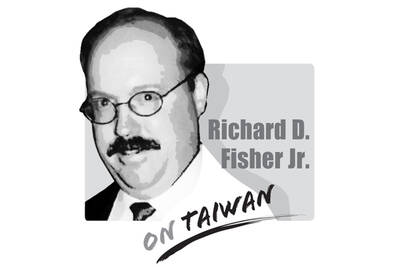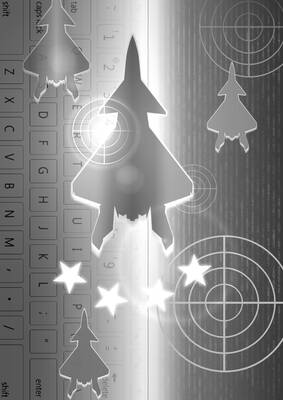Despite the sizeable turnout at the demonstrations against mismanagement by the Chinese Nationalist Party (KMT) government on Saturday in Taipei, many of the world’s most important newspapers failed to cover the event. Those that did relied for the most part on wire agencies rather than on-site reporters — the result of many years of budget and staff cutbacks at news organizations, which now only maintain reporters in major cities or dispatch them to “important” events.
What worries us, however, is not that leading newspapers do not perceive Taiwan as important enough to have journalists posted here, especially when “important” often implies massive violence as in Iraq, Afghanistan or Pakistan. What makes us pause is the oftentimes erroneous reporting about Taiwan — willful or accidental — that is being fed to the global community and how uncritically wire copy is treated by news outlets, which allows bias or outright misrepresentation to pass as news.
Leaving behind eight long years of skewed reporting on former president Chen Shui-bian (陳水扁), who for some news agencies was the agent provocateur par excellence, who never failed to “anger” and “provoke” Beijing, or “alienate” Washington with his “extremism” and “separatism,” the post-Chen era promised to bring with it a sea change in reporting on Taiwan and its new president, Ma Ying-jeou (馬英九).
At long last, the elected leader of Taiwan was “charismatic” and “Harvard-educated,” the epitome of “pragmatism” who was seeking to make “peace” with long-time “rival” China. During the presidential election, many agencies threw their supposed journalistic neutrality out the window and unashamedly supported Ma and the KMT by trumpeting the promises of an immediate fix to the economy that the previous government under Chen had “mismanaged.”
What happened after this surge of optimism, however, was that with the Democratic Progressive Party shaken to its core by twin electoral defeats, scandal and financial troubles, global news agencies continued to pound it and call it a “troublemaker.”
It is no surprise, therefore, that some news agencies’ coverage of the rally on Saturday misrepresented the event, with at least two different agencies reporting that tens of thousands of “separatists” were protesting against Ma’s efforts to improve relations with China. Not only was this characterization wrong, but it was dangerous, as it implied that Taiwanese — or at least the “separatists” — are against peace, which couldn’t be further from the truth.
Aside from the perhaps impatient discontent with the KMT administration’s handling of the economy and the failure of Ma to live up to his promises, what the tens of thousands of Taiwanese who rallied on Saturday were protesting was the speed at which he has sought rapprochement with Beijing and the long series of concessions he has made to achieve this, with no apparent sign of reciprocity on China’s part.
It was this — fear that the nation’s sovereignty is being compromised — that the “separatists” opposed. None of those who took to the street, however, would argue that defending Taiwan’s sovereignty cannot be accompanied by improved relations with Beijing. In fact, achieving the former is contingent on the latter, and anyone who says otherwise would be laughed out of town and rightly dubbed an extremist.
Sadly, without such precision and nuance, the rest of the world, which has very little time to devote to issues in far-away Taiwan, will be left with the impression that Taiwanese “separatists” are extremists who oppose peace and who are thus unworthy of their time or help.

As the Chinese Communist Party (CCP) and its People’s Liberation Army (PLA) reach the point of confidence that they can start and win a war to destroy the democratic culture on Taiwan, any future decision to do so may likely be directly affected by the CCP’s ability to promote wars on the Korean Peninsula, in Europe, or, as most recently, on the Indian subcontinent. It stands to reason that the Trump Administration’s success early on May 10 to convince India and Pakistan to deescalate their four-day conventional military conflict, assessed to be close to a nuclear weapons exchange, also served to
After India’s punitive precision strikes targeting what New Delhi called nine terrorist sites inside Pakistan, reactions poured in from governments around the world. The Ministry of Foreign Affairs (MOFA) issued a statement on May 10, opposing terrorism and expressing concern about the growing tensions between India and Pakistan. The statement noticeably expressed support for the Indian government’s right to maintain its national security and act against terrorists. The ministry said that it “works closely with democratic partners worldwide in staunch opposition to international terrorism” and expressed “firm support for all legitimate and necessary actions taken by the government of India

The recent aerial clash between Pakistan and India offers a glimpse of how China is narrowing the gap in military airpower with the US. It is a warning not just for Washington, but for Taipei, too. Claims from both sides remain contested, but a broader picture is emerging among experts who track China’s air force and fighter jet development: Beijing’s defense systems are growing increasingly credible. Pakistan said its deployment of Chinese-manufactured J-10C fighters downed multiple Indian aircraft, although New Delhi denies this. There are caveats: Even if Islamabad’s claims are accurate, Beijing’s equipment does not offer a direct comparison
To recalibrate its Cold War alliances, the US adopted its “one China policy,” a diplomatic compromise meant to engage with China and end the Vietnam War, but which left Taiwan in a state of permanent limbo. Half a century later, the costs of that policy are mounting. Taiwan remains a democratic, technologically advanced nation of 23 million people, yet it is denied membership in international organizations and stripped of diplomatic recognition. Meanwhile, the PRC has weaponized the “one China” narrative to claim sovereignty over Taiwan, label the Taiwan Strait as its “internal waters” and threaten international shipping routes that carry more